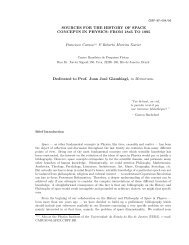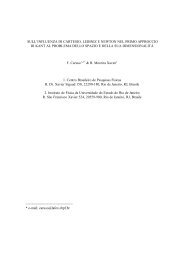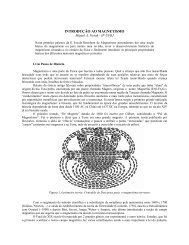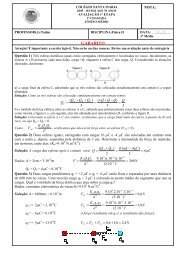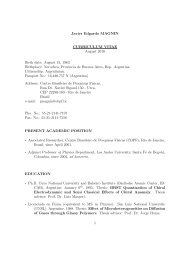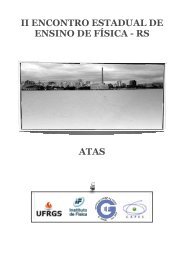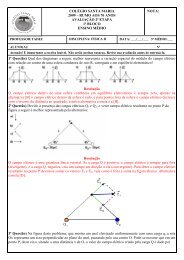Primordial non-Gaussianity in the cosmological perturbations - CBPF
Primordial non-Gaussianity in the cosmological perturbations - CBPF
Primordial non-Gaussianity in the cosmological perturbations - CBPF
Create successful ePaper yourself
Turn your PDF publications into a flip-book with our unique Google optimized e-Paper software.
and for k = +1, thus Λ > 0, one has<br />
a±(t) =<br />
3<br />
Λ e±√ Λ/3 t , (98)<br />
<br />
3<br />
a±(t) =<br />
Λ cosh Λ/3 t. (99)<br />
This is also known as <strong>the</strong> de Sitter universe. It is a maximally symmetric (<strong>in</strong> space-time) solution<br />
of <strong>the</strong> E<strong>in</strong>ste<strong>in</strong> equations with a <strong>cosmological</strong> constant and thus has a metric of constant curvature.<br />
But we know that such a metric is unique. Hence <strong>the</strong> three solutions with λ > 0, for k = 0, ±1 must<br />
all represent <strong>the</strong> same space-time metric, only <strong>in</strong> different coord<strong>in</strong>ate systems. This is <strong>in</strong>terest<strong>in</strong>g<br />
because it shows that de Sitter space is so symmetric that it has space-like slic<strong>in</strong>gs by three-spheres,<br />
by three-hyperboloids and by three-planes. The solution for k = −1 <strong>in</strong>volves s<strong>in</strong> Λ/3t for Λ < 0<br />
and s<strong>in</strong>h Λ/3t for Λ > 0. The former is known as <strong>the</strong> anti de Sitter universe.<br />
Part II<br />
Equilibrium <strong>the</strong>rmodynamics<br />
Today <strong>the</strong> radiation, or relativistic particles, <strong>in</strong> <strong>the</strong> universe is comprised of <strong>the</strong> 2.75 K microwave<br />
photons and <strong>the</strong> three cosmic seas of about 1.96 K relic neutr<strong>in</strong>os. because <strong>the</strong> early universe was<br />
to a good approximation <strong>in</strong> <strong>the</strong>rmal equilibrium, <strong>the</strong>re should have been o<strong>the</strong>r relativistic particles<br />
present, with comparable abundances. Before go<strong>in</strong>g on to discuss <strong>the</strong> early RD phase, we will quickly<br />
review some basic <strong>the</strong>rmodynamics.<br />
The number density n, energy density ρ and pressure P of a dilute, weakly <strong>in</strong>teract<strong>in</strong>g gas of<br />
particles with g <strong>in</strong>ternal degrees of freedom is given <strong>in</strong> terms of its phase space distribution function<br />
f(p)<br />
n =<br />
ρ =<br />
P =<br />
g<br />
(2π) 3<br />
<br />
g<br />
(2π) 3<br />
<br />
g<br />
(2π) 3<br />
<br />
d 3 p f(p),<br />
d 3 p E(p) f(p),<br />
d 3 p |p|2<br />
f(p), (100)<br />
3E(p)<br />
where E 2 = |p| 2 + m 2 . For a species <strong>in</strong> k<strong>in</strong>etic equilibrium, <strong>the</strong> phase occupancy f is given by <strong>the</strong><br />
familiar Fermi-Dirac or Bose-E<strong>in</strong>ste<strong>in</strong> distributions<br />
f(p) = [exp(E − µ)/T ± 1] −1 , (101)<br />
28




